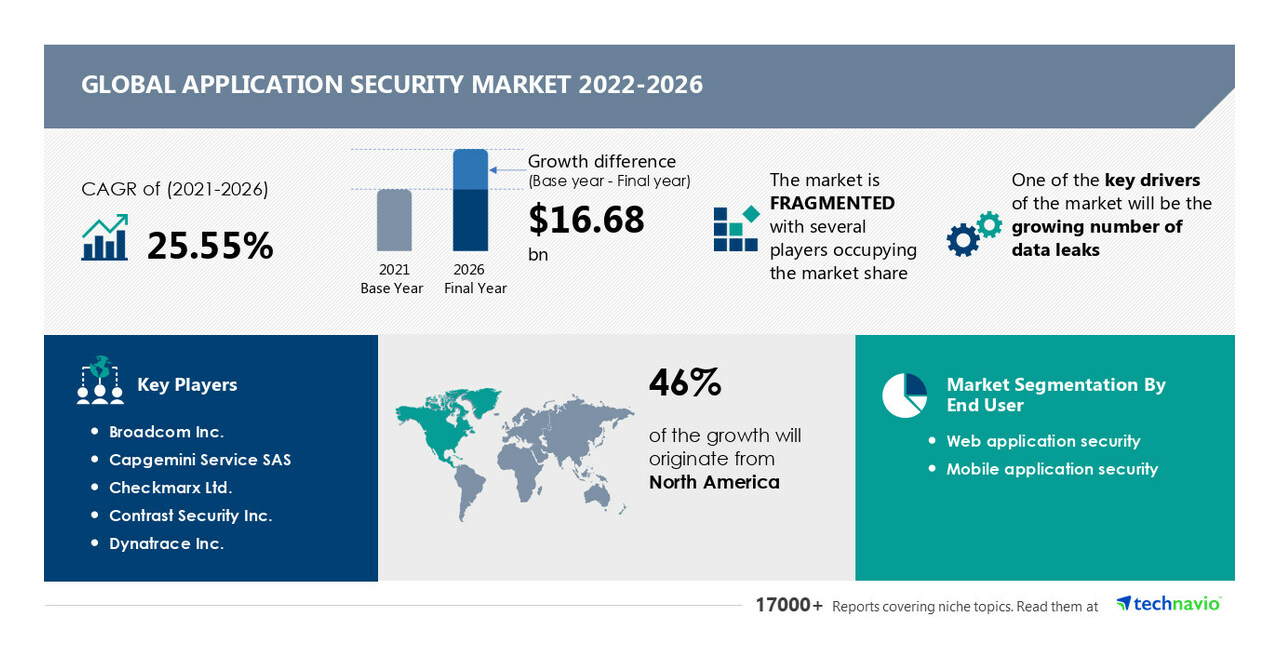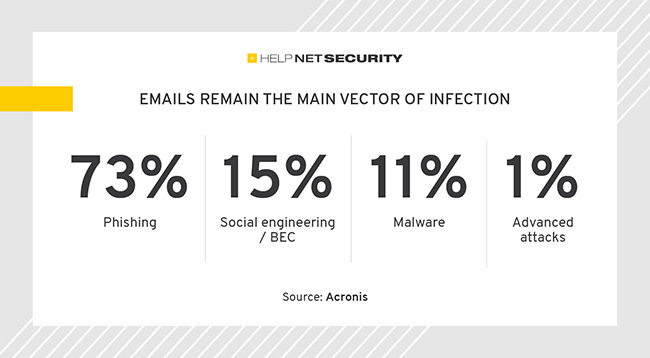Application security market to grow by USD 16.68 Billion between 2022-2026 | The market is driven by the growing number of data leaks
NEW YORK, Nov. 5, 2023 /PRNewswire/ — According to Technavio, the global application security market size is estimated to grow by USD 16.68 billion from 2021 to 2026. The market is estimated to grow at a CAGR of 25.55% during the forecast period. The market is driven by the growing number of data leaks. Globally, the number of cybercrimes is growing at an alarming rate. For instance, the number of data breaches jumped to 68% in 2021 compared to the previous year. In March and April 2020, hackers leaked the login credentials of staff at the World Health Organization (WHO). Similarly, in April 2020, about 500,000 passwords of Zoom users, a virtual meeting app, were stolen and were made available for sale in the black market. The increasing incidences of cyber attacks is compelling enterprises to invest in security solutions to safeguard critical areas of concern, which is driving the growth of the market. Gain deeper insights into the market study. Buy the report!
Application security market – Five Forces
The global cloud data warehouse market is fragmented, and the five forces analysis covers–
- Bargaining Power of Buyers
- The threat of New Entrants
- Threat of Rivalry
- Bargaining Power of Suppliers
- Threat of Substitutes
- Interpretation of porter’s five models helps to strategize the business. For highlights – Download Sample Report
Application security market – Customer Landscape
The report includes the market’s adoption lifecycle, from the innovator’s stage to the laggard’s stage. It focuses on adoption rates in different regions based on penetration. Furthermore, the report also includes key purchase criteria and drivers of price sensitivity to help companies evaluate and develop their growth strategies.
Application Security Market – Segmentation Assessment
Segment Overview
Technavio has segmented the market based on end-user (web application security and mobile application security) and geography (North America, Europe, APAC, Middle East and Africa, and South America).
- The market growth in the web application security segment will be…




